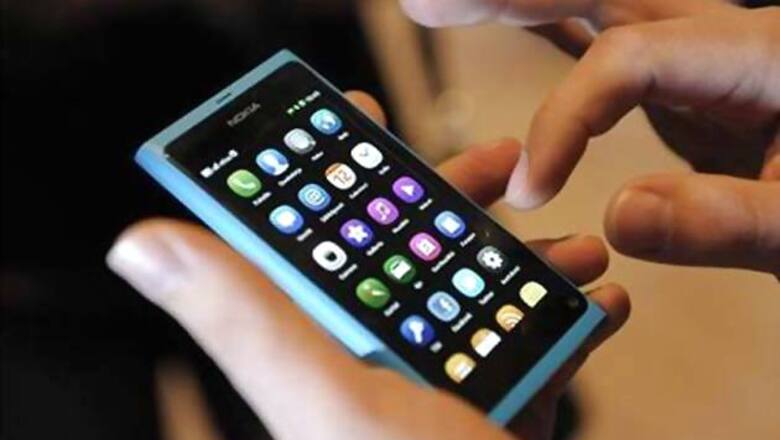
views
Washington: Researchers have developed a new smartphone app that uses the mobile's built-in camera and processing power as a biosensor to detect toxins, proteins, bacteria, viruses and other molecules.
The app and cradle system for smartphones has sensitive biosensing capabilities that could enable on-the-spot tracking of groundwater contamination and combine the phone's GPS data with biosensing data to map the spread of pathogens.
The system could provide immediate and inexpensive medical diagnostic tests in field clinics or contaminant checks in the food processing and distribution chain, researchers at University of Illinois at Urbana-Champaign said.
The wedge-shaped cradle contains a series of optical components - lenses and filters - found in much larger and more expensive laboratory devices. The cradle holds the phone's camera in alignment with the optical components.
At the heart of the biosensor is a photonic crystal. A photonic crystal is like a mirror that only reflects one wavelength of light while the rest of the spectrum passes through.
When anything biological attaches to the photonic crystal - such as protein, cells, pathogens or DNA - the reflected colour will shift from a shorter wavelength to a longer wavelength.
For the handheld biosensor, a normal microscope slide is coated with the photonic material. The slide is primed to react to a specific target molecule. The photonic crystal slide is inserted into a slot on the cradle and the spectrum measured.
Its reflecting wavelength shows up as a black gap in the spectrum. After exposure to the test sample, the spectrum is re-measured. The degree of shift in the reflected wavelength tells the app how much of the target molecule is in the sample.
The entire test takes only a few minutes; the app walks the user through the process step by step. Although the cradle holds only about USD 200 of optical components, it performs as accurately as a large USD 50,000 spectrophotometer in the laboratory. So now, the device is not only portable, but also affordable for fieldwork in developing nations.
In the study, published in the journal Lab on a Chip, the team demonstrated sensing of an immune system protein, but the slide could be primed for any type of biological molecule or cell type.
####
















Comments
0 comment